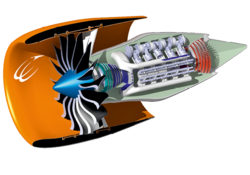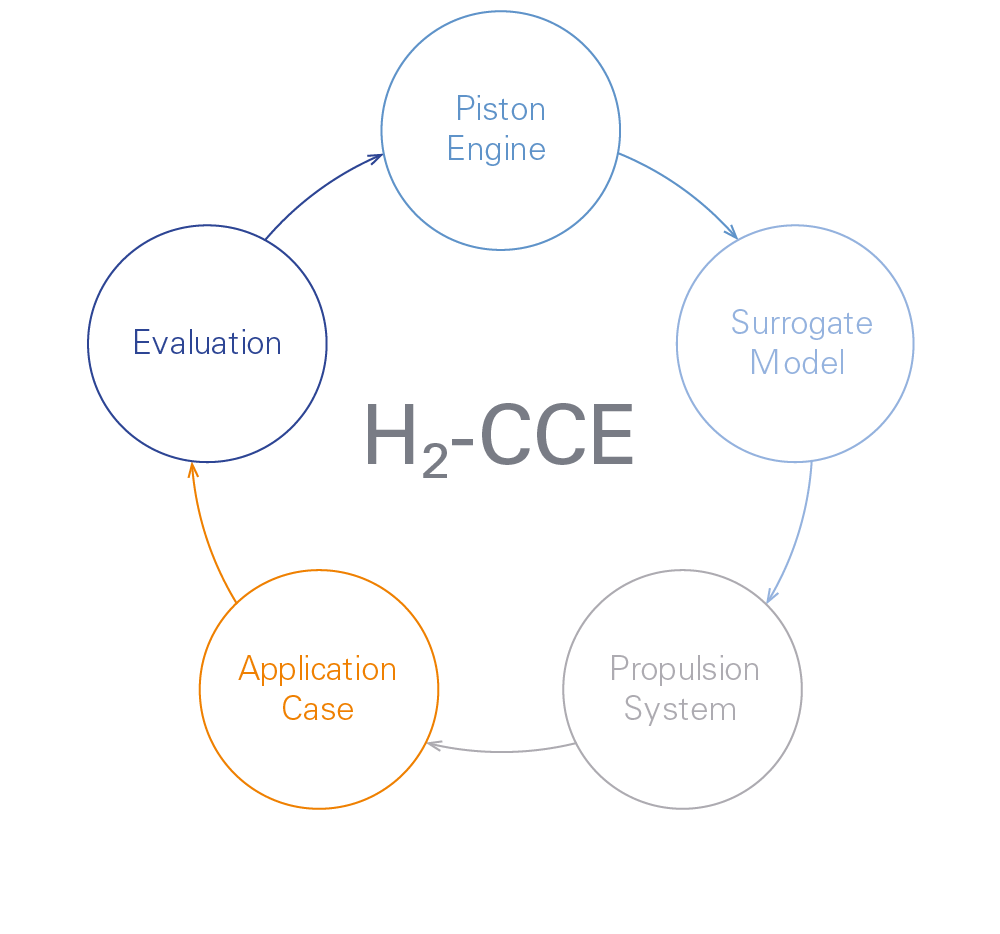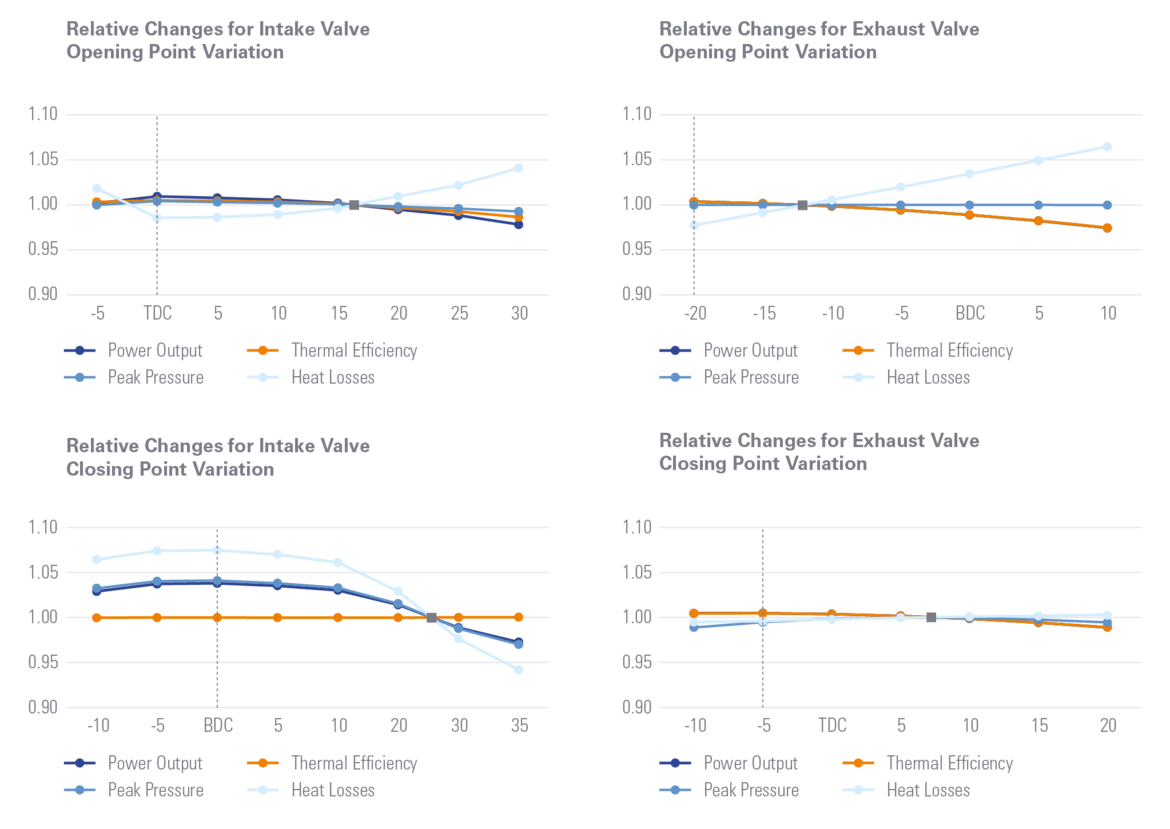Various studies have demonstrated the Composite Cycle Engine (CCE) concept’s significant potential to increase the efficiency of aircraft propulsion systems, even when comparing to expected future gas turbine technology. It is based on the integration of piston engines in the core engine of modern turbofan engines and enables extreme bypass ratios (>30). However, the kerosene-fuelled CCE is characterised by disadvantages due to increased nitrogen oxide emissions and higher engine weight. By changing the fuel to hydrogen, the different combustion characteristics and product gas properties enable new approaches to counteract these issues. First steps towards evaluating the H2-CCE have already been taken with the conversion and validation of the existing in-house piston engine performance simulation framework for hydrogen operation.

An initial analysis of the H2 piston engine indicates an increased heat loss compared to kerosene operation, which can be attributed, among other things, to the shortfall of soot formation. However, in the CCE concept, the heat loss of the piston engine can partially be recovered by the core mass flow, limiting negative effects on propulsion system efficiency. On the other hand, the hydrogen combustion gases offer a higher specific work capacity, which means that the size and weight of the piston components can be reduced. Moreover, H2 piston engine design parameters need to be optimised, as illustrated for valve timing settings. A comprehensive investigation of the H2-CCE concept is therefore of great interest for the further evaluation of CCE technology.


